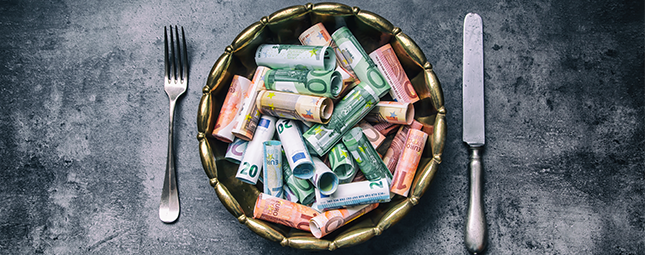
A recently released, UN-backed study discovered a 7:1 ROI for restaurant food waste initiatives and shatters the notion that the associated costs of food loss and waste can remain buried in operational budgets, accepted as the cost of doing business, or considered not worth the investment needed to achieve reductions.
The report, from the World Resources Institute and the Waste and Resources Action Programme (or WRAP), highlights five strategies deployed by top performing restaurants to achieve successful food waste prevention. Here are the five steps along with resources from Leanpath to understand those steps and succeed at each.
1 | Measure
Chefs report that accurate measurement of food waste via smart scales gives them better control over their kitchens and a better understanding of food order patterns.The study acknowledged Leanpath technology as a critical tool for kitchens to measure and manage food waste efficiently. Check out Leanpath CEO Andrew Shakman's video presentation on the importance of measurement in food waste prevention.
2 | Engage Staff
Restaurants that found less ROI from food waste prevention had something in common: many found that their management weren’t supporting their staff. For industry best practices on staff engagement check out this free whitepaper on Empowering and Engaging Culinary Teams to Prevent Food Waste.
3 | Reduce Overproduction
Overproduction is the number one culprit of food waste in restaurants, slashing already razor-thin margins. Simply tracking production and waste consistently can help identify waste hotspots, the most common of which is the buffet line. Use our whitepaper Preventing Food Waste at the Buffet: A Guide for Chefs and Managers to start combating overproduction today.
4 | Rethink Inventory and Purchasing Practice
The study found that measurement, engagement, and overproduction produce the greatest returns. Once the foundation is set with these critical steps, the study suggests negotiating with suppliers to streamline delivery schedules and updating inventory systems based on historical waste data. We’ve compiled an additional 20 helpful food waste-cutting tips from our clients and Leanpath coaches to get you ready for this undertaking.
5 | Repurpose Excess Food
Having a Plan B for how to safely repurpose leftover ingredients can allow the kitchen to generate revenue from potential waste. For savings-minded chefs and managers, Leanpath Executive Chef Robb White has prepared expert recommendations on how to repurpose the most commonly wasted food items.
Find out how much you could save with a Leanpath food waste prevention solution in your kitchen.
Answer a few quick questions and we will email you your savings opportunity calculation.


